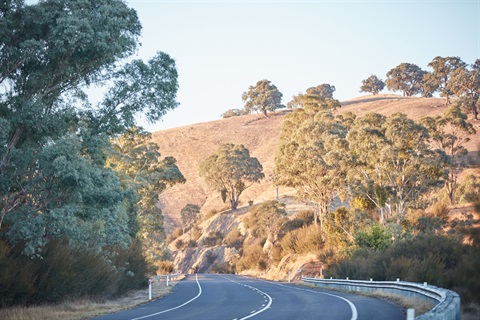
First Nations led, Sydney-based AKIN’s winning concept for a world-class waterfront park design is deeply rooted in the area’s rich heritage, weaving together the threads of landscape, art, and architecture to create a place of connection, reconciliation, and regeneration.
Named after the Cammeraygal woman and influential leader of the Eora Nation, Barangaroo has more than 7,000 years of history and stories to tell. The land’s Traditional Custodians, the Gadigal, used the area for hunting, fishing, canoeing, and swimming, while its foreshore was a gathering place.
The design incorporates significant public artworks, referred to as ‘vessels’ by AKIN, revolving around the natural elements of water, wind, and moon, which all have special significance in Indigenous knowledge systems.
Artists Chris Fox, who is Senior Lecturer at the Sydney School of Architecture, Design and Planning, and Jacob Nash said: “The three significant First Nations led artworks will not be static – they will be deeply engaged with the Country that they reside upon.
“They will be brought to life through an interplay with nature and the seasons and established as sites for gathering. They will function as living cultural objects within the city of Sydney to be loved and appreciated by residents, visitors, and the world, for generations to come.”
AKIN – which includes leading thinkers and designers in Indigenous knowledge systems, landscape architecture, architecture, regenerative design, public art, and placemaking – focused on Country-centered design initiatives to support regenerative ecology and natural systems, drawing insects, birds, and other fauna.
A landscape of local, native plantings will speak directly of place, with tree species such as Sydney Red Gum, Casuarina and Cabbage Tree Palm featuring prominently, along with a variety of endemic grasses.
Water will also play a vital role in the new parkland, with runoff collected and filtered through the landscape before being returned to the Harbour in better condition.
The water vessel will form a connection point to the Harbour and a place for gathering and ceremony. Constructed from timber, it will reference pre-settlement campfires that burned along the Harbour as well as Sydney’s shared contemporary history. The piece will also frame Me-Mel Island (Goat Island), a physical and cultural landmark for Traditional Custodians.
Suspended in the windiest corner of the park, the wind vessel will symbolically ‘collect’ the people who pass through it. It will give a ‘voice’ to whispering winds coming into Barangaroo from the west each morning, sharing stories, songs and language with all the park’s visitors.
Featuring an oculus and a reflective, lined underside echoing tidal lines in the Harbour, the elevated moon vessel will capture the movement of the moon across the sky. The west-facing site is a landscape of longing that never sees a dawn – an ever-present reminder of time as the sun and moon are always transiting away from this place.
Chris adds, “Working with Jake, we have envisioned three major public artworks responding to Country. Each ‘vessel’ has its own story and materiality integrated into the landscape.
In addition to the public artwork the park will provide open space for up to 6,000 people to gather, with benches, paths, a kiosk, and other amenities adding to the park’s diverse appeal.
Yerrabingin founder and CEO, Christian Hampson, who is orchestrating AKIN’s design themes, said: “For us, this is much more than a park – it’s a place to celebrate an enduring culture and to move with Country, acknowledging and experiencing our collective past and present while dreaming of our future.”
“Our design is a new chapter connected to the most ancient of stories, carved in the sandstone of Sydney: the story of Country and of us, its people. We hope this new chapter inspires all our young people, fanning the embers inside them into a fire as the future artists, architects, designers, and engineers of our cities and our nation.”
AKIN is made up of Studio Chris Fox, Yerrabingin, Architectus, Flying Fish Blue and Jacob Nash Design, with Arup as engineering consultants.








